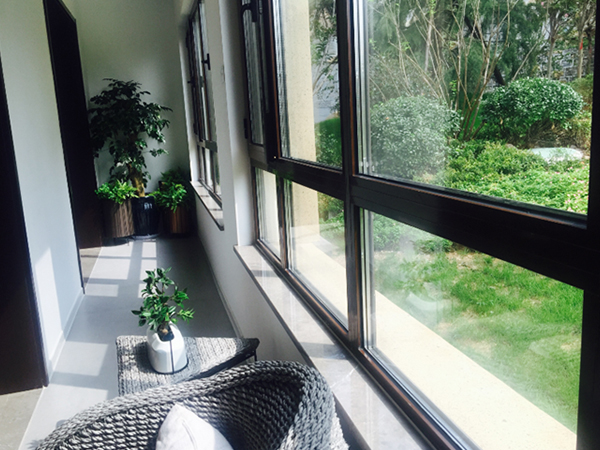Due to the desiccant that can absorb water molecules inside the insulating glass, the gas is dry. When the temperature decreases, there will be no condensation inside the insulating glass, the dew point on the outer surface of the insulating glass will also increase. For example, when the outdoor wind speed is 5m / s, the indoor temperature is 20 ℃, the relative humidity is 60%, the condensation of 5mm glass starts when the outdoor temperature is 8 ℃, while the condensation of 16mm (5 + 6 + 5) hollow glass starts when the outdoor temperature is - 2 ℃, the condensation of 27mm (5 + 6 + 5 + 6 + 5) three-layer hollow glass starts when the outdoor temperature is - 11 ℃.
There are three ways of energy transfer: radiation transfer, convection transfer conduction transfer.
1. Radiative transfer
Radiative transfer is the transfer of energy in the form of radiation through rays, including visible, infrared ultraviolet radiation, just like the transfer of sunlight. The reasonable arrangement of the insulating glass the reasonable thickness of the insulating glass can greatly reduce the transmission of energy through the radiation form, thus reducing the loss of energy.
2. Convective transfer
Convection transfer is due to the temperature difference on both sides of the glass, which causes the air to fall on the cold side rise on the hot side, resulting in the convection of the air the loss of energy. There are several reasons for this phenomenon: first, the poor sealing between the glass the surrounding frame system results in the direct exchange of gas inside outside the window frame to generate convection, resulting in the loss of energy; Second, the unreasonable design of the internal space structure of the insulating glass results in the convection of the gas in the insulating glass due to the effect of the temperature difference, which drives the exchange of energy, thus resulting in the loss of energy; Third, the temperature difference between the inside outside of the windows that make up the whole system is large, resulting in a large temperature difference between the inside outside of the insulating glass. With the help of cold radiation heat conduction, air first generates convection on both sides of the insulating glass, then transmits the past through the insulating glass as a whole, forming the loss of energy. The reasonable design of hollow glass can reduce the convection of gas the convection loss of energy.
3. Conduction transmission
Conduction transmission is to drive energy to move through the movement of object molecules, achieve the purpose of transmission, just like making rice with an iron pot soldering things with an electric iron, while the conduction transmission of energy by hollow glass is completed through the glass the air inside it. We know that the thermal conductivity of glass is 0.77w/mk. The thermal conductivity of air is 0.028 w / MK, so it can be seen that the thermal conductivity of glass is 27 times of that of air, the existence of water molecules other active molecules in air is the main factor affecting the energy transmission convection transmission performance of hollow glass, so improving the sealing performance of hollow glass is an important factor to improve the thermal insulation performance of hollow glass.
